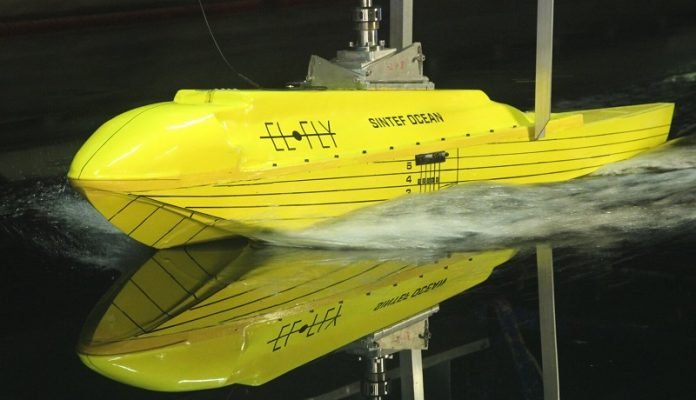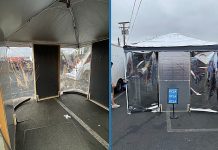
A Norwegian company is now developing a small electric seaplane that can transform local passenger traffic on a large scale.
The design of the hull is currently being tested in SINTEF’s towing tank in Trondheim, and the plan is to get a full-scale prototype in the air within three years.
“This will be a kind of battery-powered flying boat.
The goal is to be able to provide flexible mobility in Norway, with zero emissions and significantly reduced noise pollution, and also develop new, sustainable business models,” says Eric Lithun, CEO of Norwegian company Elfly.
Plane with futuristic boat hull
Naturally, the new seaplane needs a completely new type of design based on a boat hull.
“It is particularly important to develop the hull so that the aircraft can take off using as little power as possible. The challenge is to find the ultimate combination of aerodynamics and hydrodynamics,” says Kourosh Koushan, a SINTEF research scientist.
This is challenging among other things because the propellers above the wings initially push the bow of the hull downwards in the water, before the plane gradually lifts as it gains speed.
Testing the hull in the towing tank
The work of developing the hull is well under way. Testing is taking place in SINTEF’s Ship Model Tank in Trondheim. In the 260 meter-long tank a model of the hull is towed to discover the optimal shape.
“We test the hull by towing it at different angles and assessing how this affects the water resistance.
This will provide data that we can use to produce a data simulation of the take-off phase. We will compare the results to propose improvements of the hull,” Koushan explains.
Elfly Group has now reached version four of the hull.
“This is a painstaking process of measurement that will result in new versions of the hull,” says Lithun.
The research that will provide data for the design of the optimal hull is a special research project funded by the Regional Research Fund.
Alternative to helicopters?
If Elfy is successful, the aircraft of the future will therefore be electric, environmentally friendly, quieter, and able to fly shorter routes and from a larger number of locations.
“We are talking about zero-emission and an electric motor that only creates a faint buzzing sound,” says Lithun of the seaplane, which will take off from and land on water, but will also have wheels enabling it to operate from airfields.
“It shall be capable of flying 200 kilometers at around 250 kilometers per hour. The flight time from Bergen to Stavanger will then be 40 minutes, as compared with four to five hours by car,” says Lithun, who adds:
“Since battery development results in an improvement of two to three percent each year it won’t be long before we can fly further.
We envisage that it will eventually be possible to fly from Bergen to Trondheim with a stopover in Molde. Note that this will be from city center to city center and will beat all other alternatives even with the stopover.”
In Lithun’s opinion, the reason why seaplanes are not already widespread is that existing aircraft use internal combustion engines that suck in oxygen and salt water, which corrodes the engine.
“This leads to sky-high maintenance costs in operation. Changing to electric power eliminates this problem,” he says.
From transport to exclusive travel
The motor and battery for the aircraft will be bought. The latter may weigh up to 1.7 tons and shall theoretically be capable of being charged anywhere.
“However, we plan to use the same plug as for electric boats, which is also the one used for electric cars in the EU,” Lithun explains.
The electric seaplane will have room for nine passengers, and Elfly itself will offer flights in the same way as other commercial operators.
“The goal is to have 15 or 20 aircrafts in the air by 2030,” says Lithun.
In addition to passenger flights, the seaplanes may also be used for goods transport, ambulance services and premium flights, for which the entire aircraft can be chartered.
“We envisage that it can be used for exclusive electric plane safaris. My dream is that a person in New York can book a journey on a regular flight to Bergen in Norway and then travel on with our plane directly to Geiranger, further to Odda to see Trolltunga, followed by a quick trip to Lysefjorden and Prekestolen before landing at Sola Airport, Stavanger, to board a flight back to New York,” says Lithun.



